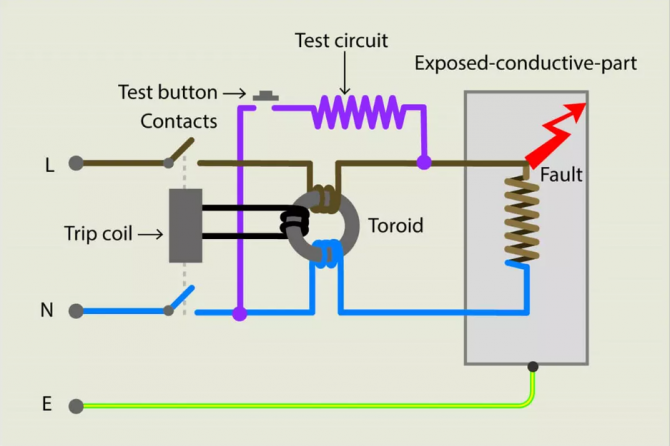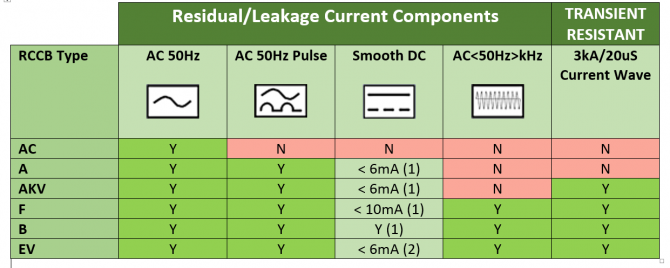What are the effects of DC residual fault current on RCDs?
What are RCDs and how do they work?
RCDs are a protective device used in electrical installations to achieve protection against:
- faults where the tripping current is dependant on the earth path.
- additional risks from carelessness by users and/or higher risk environments.
- fire from currents leaking to earth through insulation degredation.
The RCD will monitor the current in the live conductors and when there is a leakage current to earth a voltage will be induced into a tripping coil which will disconnect the supply.

Leakage currents can appear in many forms. Typically we consider them to be 50 Hz AC, and this is where Type AC RCDs were a suitable selection. Any leakage through insulation breakdown or failiure would just be representative of the supply characteristics.
However, many items of electrical euipment manufactured today use electronics instead of transformers, variable speed drives (VSDs) instead of pumps and incandescent lighting being replacd with LED.
Modern appliances are becoming increasingly more sophisticated, featuring microprocessor technology with an emphasis on energy reduction. This has led manufacturers to incorporate energy-saving measures, such as speed control, which by the nature of its operation has an element of DC residual fault current.
So what are the effects of DC residual current on an RCD?
When equipment produces DC in it's construction, it is connected to the rest of the electrical installation. The DC can saturate the magnetic core and effectively blind or locks the RCD. This is known as ‘blinding’ and could either prevent the RCD from operating or reduce the sensitivity resulting in a dangerous situation.
I explained this theory looking at the Hysteresis loop in the following video
What typical equipment would have DC residual leakage?
All newer technologies are inventing ways to reduce energey, improve affordability and be innovative in everyday items.
Washing machines, coffee machines, boilers, LED lighting, dishwashers, tumble dryers, refrigerators and variable speed drives can all create a DC fault current during their operating cycle.
Installations of new technologies like Electric Vehilce (EV) and Solar Photovoltaic (PV) may require special consideration, depending on the manufacturers protection provided with the EV charging point and PV inverter accordingly.
Selecting the right Type of RCD
RCD selection must be determined by equipment type to ensure that it is suitable to provide protection. Equipment with DC leakage characteristics should be minimum Type A.

